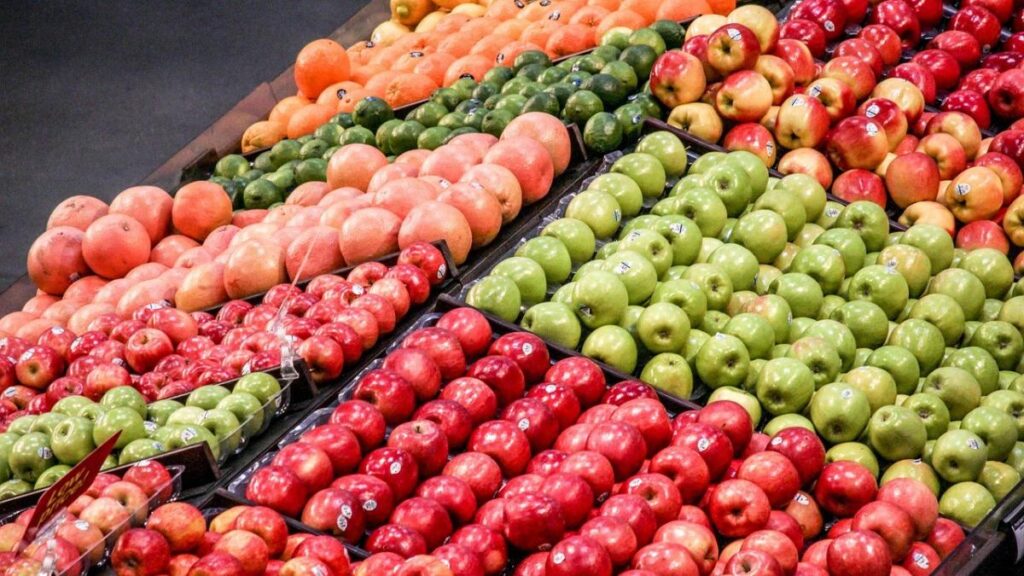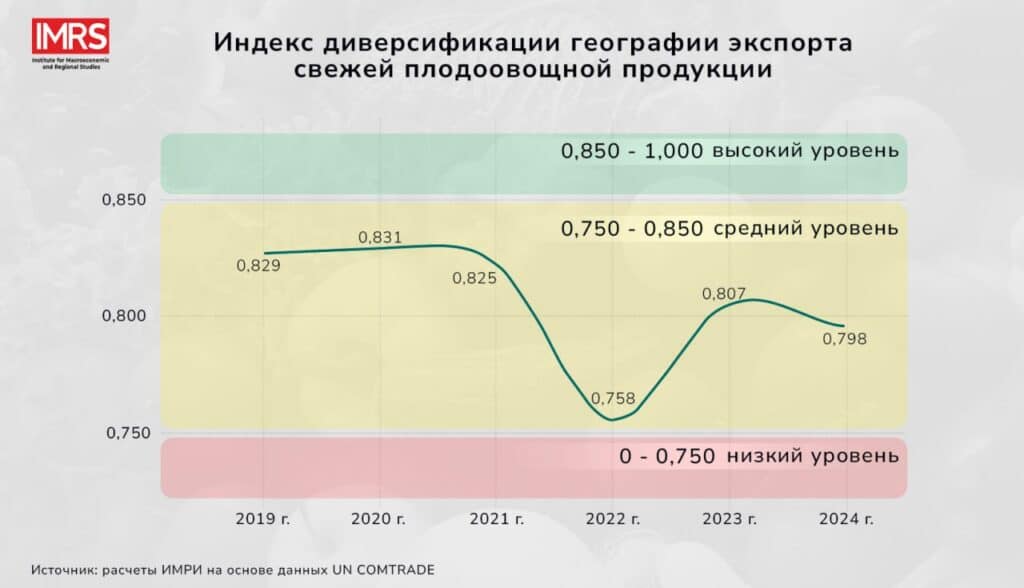Top Five Countries Still Dominate Uzbek Produce Exports

The Institute for Macroeconomic and Regional Studies (IMRS) has published its index calculations for the diversification of Uzbekistan’s fresh fruit and vegetable export geography for the period 2019–2024.
The results indicate a «moderate level of diversification» throughout the observed years. While the range of export destinations has expanded somewhat, the country’s exports remain concentrated in a limited number of markets.

The index is based on the inverse of the Herfindahl-Hirschman Index, a commonly used measure of market concentration. It assesses how evenly exports are distributed across trading partners.
Values above 0.85 reflect high diversification, while values below 0.75 indicate low diversification. Uzbekistan’s index scores have consistently remained in the 0.75–0.85 range, which places the country in the mid-range category.
By 2024, the number of countries receiving Uzbek fresh produce increased from 68 to 73. However, the top five importers still accounted for the overwhelming majority of exports—from 78% in 2019 to 83.8% in 2022.
In 2023, the leading markets were Russia (38.7%), Pakistan (13.5%), Kazakhstan (12.6%), China (8.9%) and Afghanistan (8%). The list of destinations has grown but the bulk of export volumes remains heavily concentrated.
The share of exports to CIS countries declined from 69.4% to 57.7% but remains dominant. Meanwhile, access to the European Union market has grown slowly, increasing by just 0.3 percentage points over five years — from 2.1% to 2.4%.
Kursiv also reports that Russia exported over $170 mln worth of chocolate in the first four months of 2025.

